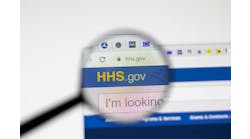For advocates of rural health IT, last week was an interesting one to say the least. There was hope for the future, and a look at the reality of the current situation. Where do we start?
Let’s start on Dec. 12, when the Federal Communications Commission (FCC) announced the creation of the “Healthcare Connect Fund,” giving providers something to look forward to in the future. The fund aims to expand access for rural healthcare providers to “robust broadband networks.” It’s a modernization of the FCC’s universal service program for healthcare, giving it a shot in the arm in the form of a “$400 million ceiling.”
As most healthcare IT leaders know, strong broadband networks are vital to things like telehealth treatment and remote health monitoring, which both could vastly improve a rural healthcare environment. FCC officials say their fund will bolster these networks through various measures including removing artificial limitations on technology and provider type, encouraging smaller rural healthcare providers and urban medical centers to group together to “allow remote hospitals and clinics to draw on the medical, technical and administrative resources of larger providers,” supporting broadband services purchased by “diverse communications providers,” and by covering upgrades to higher speed systems.
There’s also increased fiscal responsibility for participants and the introduction of a new pilot initiative, with $50 million available from the Fund for these programs. The FCC knows how much of a benefit these programs can be for rural providers. This increased dedication should be commended. Without these types of programs, it’s hard to see progress being made on the rural health IT front.
Of course, this week was not without a reminder of the stark reality of just how much of an uphill climb rural providers face on this front. A new report from the federal Government Accountability Organization (GAO) found that acute care hospitals were 1.7 times more likely and children's hospitals were 1.6 times more likely to have been awarded a Medicaid EHR incentive payment for 2011, when compared to critical access hospitals.
More on that report can be read here.
I can recall sitting in on a webinar from the National eHealth Collaborative (NeHC), where Chantal Worzala, director of policy for the American Hospital Association (AHA), mentioned how some rural hospitals were still on dial-up. The various challenges for these providers, she talked of that day, were insufficient broadband and bandwidth, market issues, and lack of capital funds. Combined, she said, this has created the digital divide that the GAO reported on last week. In fact, Worzala I recall talked of the digital divide in terms of numbers, thanks to an AHA poll, that lined up with the GAO report.
While meaningful use is just one element in this picture, it represents how much rural healthcare needs initiatives like the Healthcare Connect Fund and the Office of the National Coordinator for Health IT’s Rural Community of Practice (CoP) initiative, more than ever.
Please feel free to respond in the comment section below or on Twitter by following me at @HCI_GPerna

